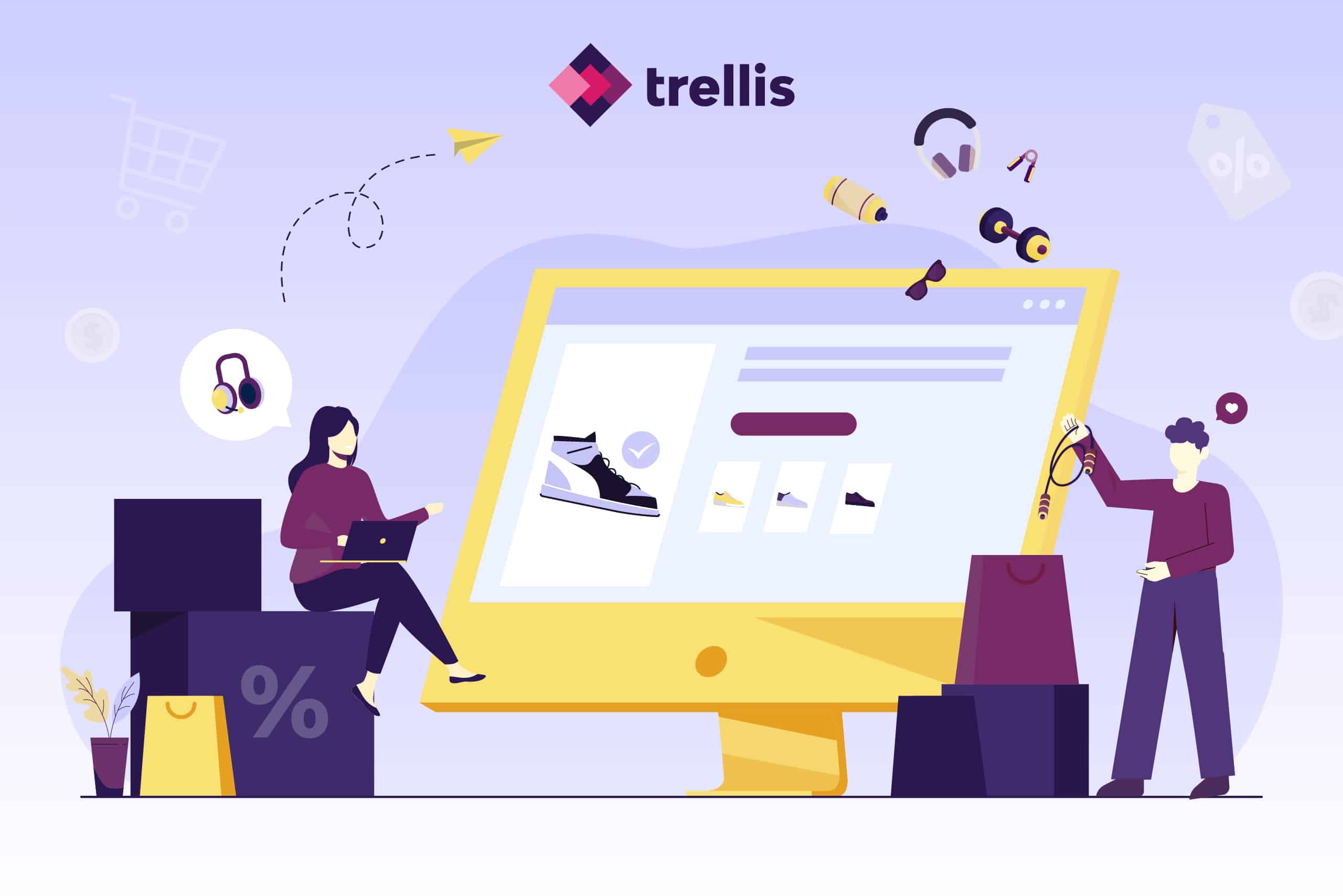The days of “growth at all costs” are behind us. In today’s retail climate, competition is steep, ad costs are high, and profits are getting harder to find.
Since it launched Fulfilled By Amazon (FBA) in 2006, Amazon’s fees have nearly doubled. Today, it owns nearly 45% of every seller’s gross merchandising value (GMV).
In the future of eCommerce, growth still matters — but brands are no longer willing to pay any price for it.
To avoid sending your hard-earned dollars straight into your marketplace’s pockets, you need a plan to not just grow, but grow profitably. In this article, we’ll share five practical eCommerce merchandising strategies to keep your business profitable as you scale.
5 Ways to Drive Profitable Growth through eCommerce Merchandising
In the recent past, brands could afford to overlook their margins. With a focus on fast (if messy) growth, they could sell to an aggregator and make a profitable exit. That is, until they couldn’t.
The good news is, profitability is like any other business problem. Once you know the formula, it can be solved. Start with these five strategies.
1. Track Your Profit Per Session (pPS)
There’s a reason major grocery retailers have entire teams dedicated to analyzing profitability. In industries with historically tight margins, retailers have long recognized the importance of merchandising — and they’ve gotten it down to a science.
It’s time for marketplace sellers to learn to do the same. And the good news is, it’s easier than you probably think.
At Trellis, we’ve worked with thousands of merchandising data points across hundreds of brands. We’ve found that the single most important metric as you scale is profit per session (pPS) — the amount of profit generated for each unique visitor to your product detail page (PDP) in a 24-hour time period.
Here’s the formula for pPS:
Profit Per Session (pPS) = Total Profit / Total Sessions
Profit per session makes a great north star metric because it provides a clear answer to the question, ‘how much profit is generated from each visit to my product page?’
By keeping a close eye on your pPS, you’ll be able to see whether the changes you make to your pricing, discounts, and ad strategies are actually moving the needle on profitability.
2. Optimize Your Product Listings and Content
One way tight-margin businesses win is by focusing on making purchases as low-involvement as possible. Consumers don’t have to scour the full shelf to find the product they’re looking for. Instead, the product is placed and promoted front and center for them to reach out and grab.
For marketplace sellers, the same concept applies to your product listings and content:
- Optimize product titles: Start with your brand name and include your main target keyword or phrase directly in the title. Stay on top of your marketplace’s latest SEO guidelines and avoid fluff or unnecessary symbols that could make it more difficult for shoppers to find your products.
- Optimize bullet points: List the top five features of each product, aim for a consistent length for each, and use straightforward (never promotional) language.
- Use quality product images: Aim for multiple angles on a white background, lifestyle images, and use props to create contrast and capture shopper attention.
- Take advantage of Amazon A+ Content: Add rich text and video to tell a strong Brand Story and list all your product variations in a comparison chart to make it easy for customers to find what they’re looking for.
Things move fast on Amazon and Walmart. To stay profitable, brands need a holistic plan to optimize all 4Ps of eCommerce merchandising — product content placement, pricing, and promotion. Making sure you’ve created a low-effort purchasing environment through fully optimized product listings is a perfect place to start.
3. A/B Test Your Ads
The eCommerce landscape has changed dramatically in a short amount of time. Aggregator investments have gone from $6 billion in 2021 to $68 million in 2023, competition has skyrocketed, and sellers are under pressure to spend more money just to get the same placement they once got for a fraction of the cost.
By regularly adjusting and optimizing your advertising, you can increase your click-through rates (CTRs) without sacrificing your margins.
Here are some tips to help you A/B test your ads for maximum profitability:
- Quantify your wins: How many people are clicking? How often do you win the Buy Box? What percentage of clicks turn into conversions? Choose your key performance indicators (KPIs) and start tracking consistently — not just when you have an ACoS problem.
- Use a central reporting dashboard: Whether you’re advertising on one or many marketplaces, make sure you have one central dashboard to track your campaigns. Consistency is key in A/B testing. With a single place for monitoring your impressions, CTR, budget, and more, you can make sure your strategy is optimized across multiple campaigns and channels.
- Run two campaigns at a time: Start with one experiment per month to determine which campaign performs best based on the impact each one has on your pPS.
- Test different formats, imagery, and messaging: Use split testing to find out what resonates with your audience and make data informed decisions around which keywords and strategies will elevate your profitability.
Whenever you make an adjustment to your headlines or make other changes, use your pPS to gauge the impact on your profitability. What happens when you change your targeting parameters, or update your imagery? How does each of these changes impact your profit per session?
“The Amazon user is very specific. They have a more agnostic way of looking at and making purchases, so you need to make your images in a specific and select way in order to get that conversion,” says Trevon Heath, Head of Growth at Sequence Commerce.
In the same way food manufacturers pay slotting fees to get onto better shelves, marketplace sellers know they have to pay to play if they want any chance at getting in front of shoppers. Experts like Trevon believe the best way to stand out in an ocean of competition is to test, test and test some more.
4. A/B Test Your Pricing
In the current retail climate, pricing is anything but static. So, how do you find the sweet spot?
As with your ads, you can split test your pricing to strike the right balance between sales velocity and profitability. Here are some tips to help you find the best price:
- Choose two different products: To avoid the perception of unfairness, avoid testing two products in the same category at the same time.
- Decide which price points to test: Select your test prices based on competitor pricing and your operational costs.
- Measure revenue and profitability, not conversions: Lower prices will deliver more conversions, but that doesn’t mean you’re hitting your revenue goals. If you set prices too low for the sake of increased volume, you could wind up selling at a loss.
- Choose the best price: Which price has the best impact on your pPS? Pricing curves are always going to shift, but with the right benchmarks for each product, you can standardize your pricing processes for increased profitability across your product portfolio.
As you continue experimenting with your pricing, take time to get to know the pricing landscape for each product.
We recently worked with a brand to demystify their products’ demand elasticity and increase sales by 66%. By finding products with unnecessarily low prices, we were able to grow gross contribution margin by 103%. And with better sales and rankings, they were also able to reduce their reliance on ad spend and improve TACoS by 50%.
Not sure if you’re priced correctly? Try the Amazon Price Elasticity of Demand Calculator and find your optimal price.
5. Level Up Your Inventory Planning
As a fast-growing brand, you might be doing five- or even six-figures per month in sales. And if you’re like most retail entrepreneurs, you probably haven’t had time to stop and streamline your operations.
But profit comes from efficiency. Too much or too little inventory can have a major impact on your sales and cash flow, but with a streamlined system for inventory planning you can make sure you always have the right products in the right place, at the right time.
Here’s where to start:
- Pinpoint your replenishment patterns: Track how often you’re replenishing each product and ensure that your forecasting accounts for any seasonal demand fluctuations, or outliers and anomalies that could be keeping you stuck in a cycle of over- or under-stocking.
- Understand supplier lead times: Act early to avoid stockouts, mitigate the risk of supply chain disruptions, and improve supplier relationships.
- Use product lifecycle management strategies: Understand when you need to ramp up for rising star products, or reduce stock on mature or retaining products.
- Replace or add new suppliers: To avoid costly delays or setbacks, consider partnering with suppliers closer-to home.
Last but not least, don’t rely solely on your marketplace to let you know when or how much to replenish. Instead, start taking a good look at what your sell through rate (STR) based on what’s healthy for you as brand owner.
Pull All the Right Profitability Levers
As the industry continues to mature, brands are up against increased competition, pricing pressure, marketing costs, and more — all of which are making it harder to protect your profitability.
eCommerce merchandising is the answer. By consistently applying profitable tactics in your product, placement, promotion, and pricing strategies, you can position your business to win, no matter what the market throws at you next.
Say no to growth for growth’s sake. Schedule your demo today and learn how Trellis helps brands scale profitability.



